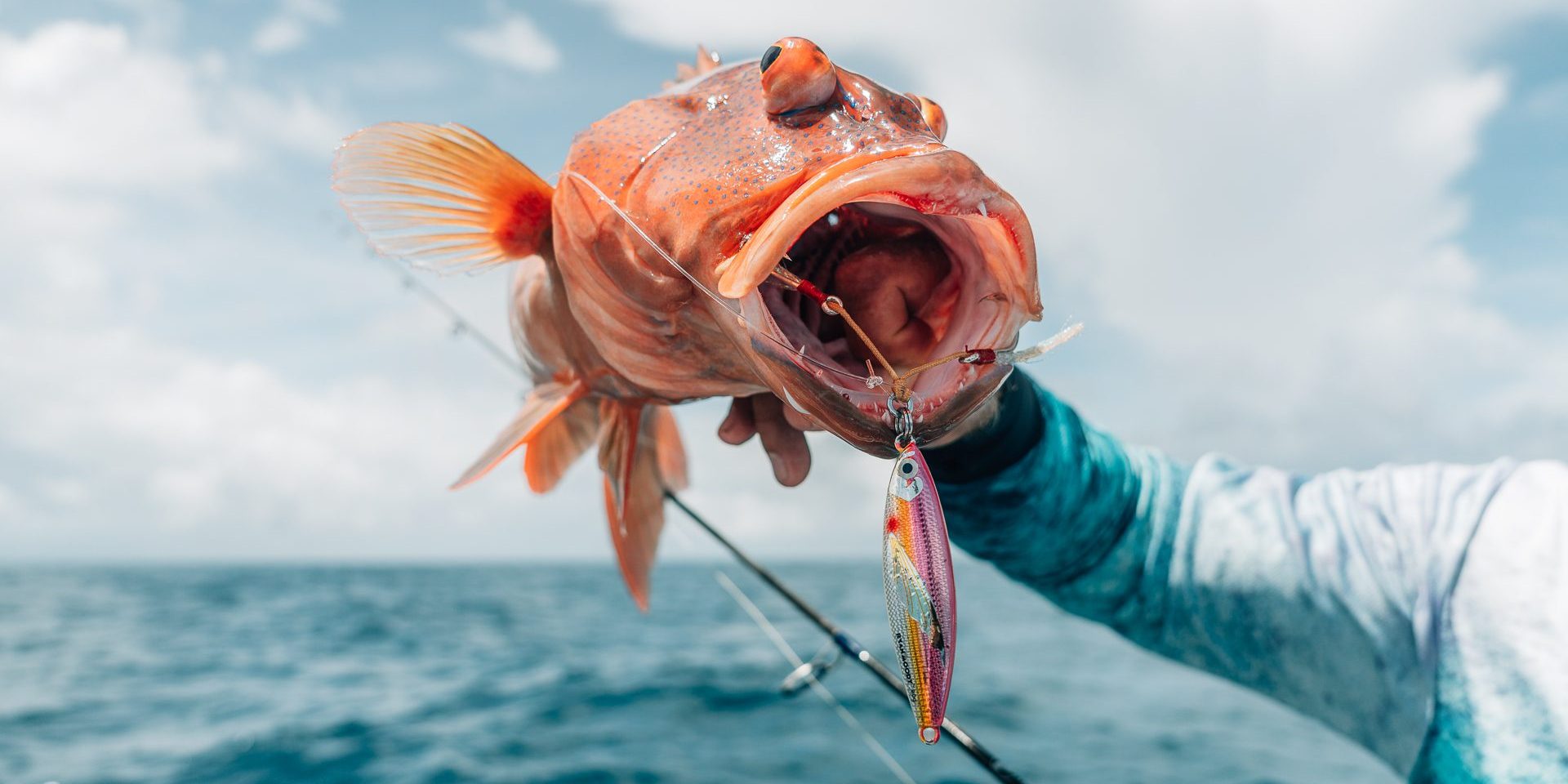Reef fishing enthusiasts seeking an effective and exciting technique to target a variety of species should consider slow pitch jigging.
This method emphasizes a deliberate and enticing lure presentation that triggers the predatory instincts of reef-dwelling fish.
In this blog, we will explore the ins and outs of slow pitch jigging and why it has gained popularity among anglers worldwide. Follwed by a video demonstrating the effectiveness of this technique on reef fish like coral trout and grouper.
Slow pitch jigging is Ryan’s favourite technique for bottom dwelling demersals.
And with a different retrieve, also works well on pelagics. Slow pitch jigging or SPJ for short originated in Japan. Hence our RMF Levitator slow pitch jigs were designed there! After trialling many different types of jig, these were such a standout we decided to import them. These jigs “levitate” in the strike zone, making it easier to master the art of deliberate lure presentation.What is slow pitch jigging?
Essentially SPJ is using a light, flexible rod to jig a metal jig up and down like a tea bag. Obviously there’s more to it than that! The key is in the fall. Working the lure to allow it to “flutter” down into the strike zone. 90% of the time, the lure will get hit on the fall. Unlike a sinker than just drops to the bottom, these jigs are designed to duck and weave, imitating an injured baitfish. And the key for the angler, is to get as much life out of the jig as possible. Which is why the rods are super light and flexible. To get the most action out of the lure as possible. We have a list of rods and reels used for jigging (and other forms of fishing) in our gear and tackle cheat sheet.Pros of SLOW PITCH JIGGING
- Anything eats these jigs. As you’ll see in the video below
- Nice clean boat – no dirty bait to clean up
- Get smacked as soon as they hit the bottom (or move on)
Cons of SLOW PITCH JIGGING
- Specialist gear. The Palmarius custom rods shown in the video are quite expensive. (enquire here).
- Takes some time to master various jigging techniques, so you have some variety.
Mastering the technique
The key to successful slow pitch jigging lies in mastering the technique. Start by dropping the jig to the desired depth, then work it back up with a series of gentle rod movements, using a rhythmic up-and-down motion. The lure should flutter and dance enticingly, imitating a vulnerable prey item. Vary the rhythm, speed, and depth of your jigging to find what triggers the fish’s interest.Quick tips
- Practice in the pool so you can see how the lure is effected.
- We provide a step-by-step demo on technique upon purchase of one of our RMF “Levitator” lures.
- As you’ll see in the video, using this technique on isolated structure is the BOMB.
- Braided lines provide the sensitivity needed to transmit the lure’s action.
- A slow pitch rod, typically around 5’6 to 6’0 feet in length, has a delicate tip and strong, powerful mid section.




